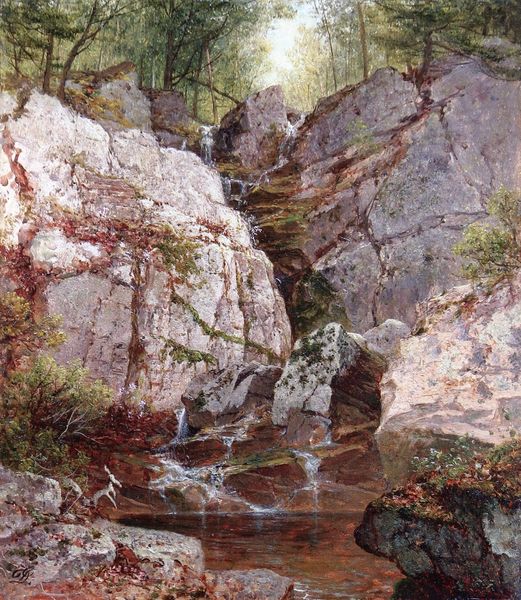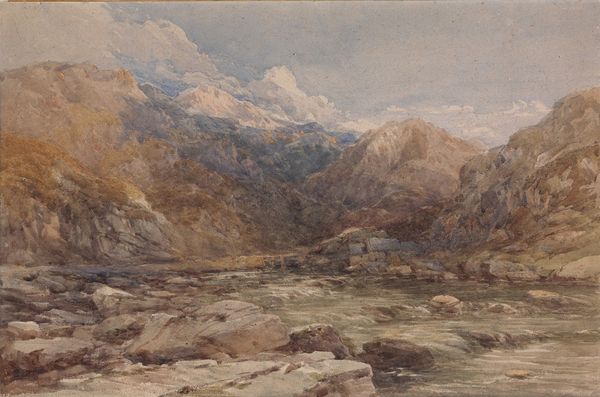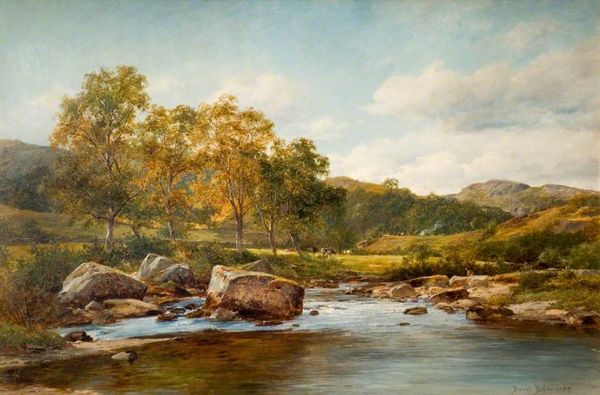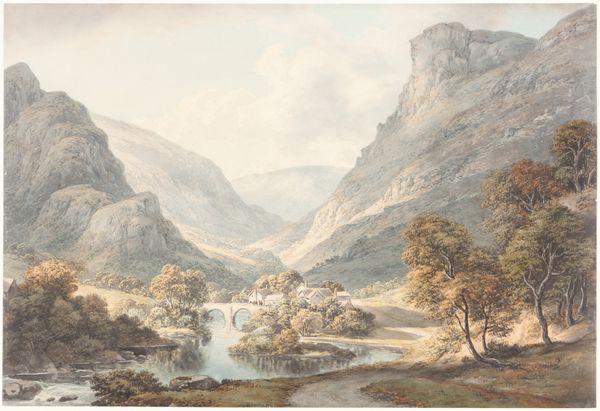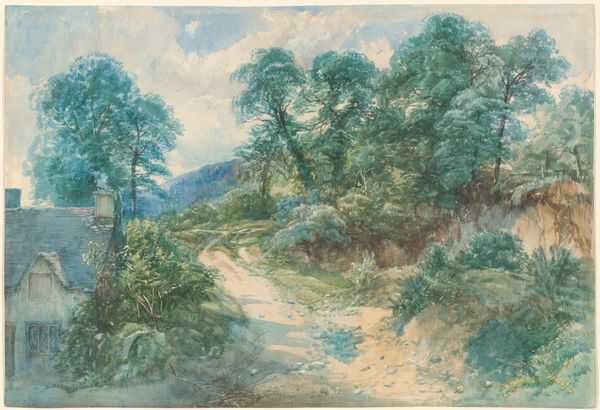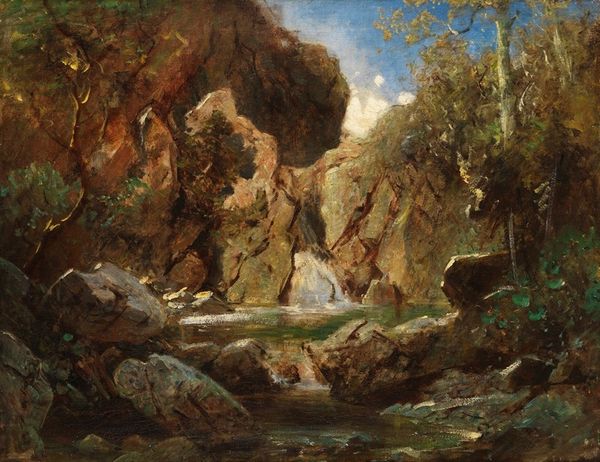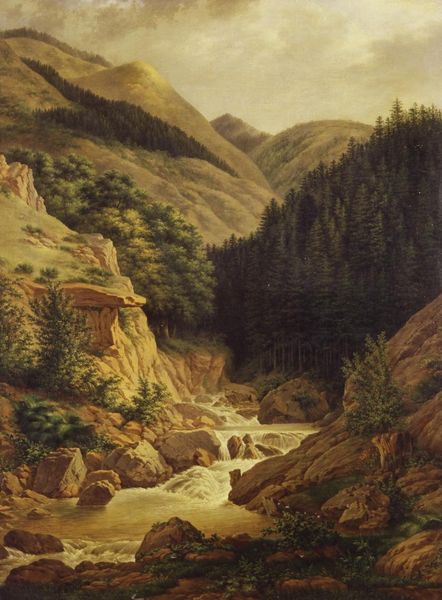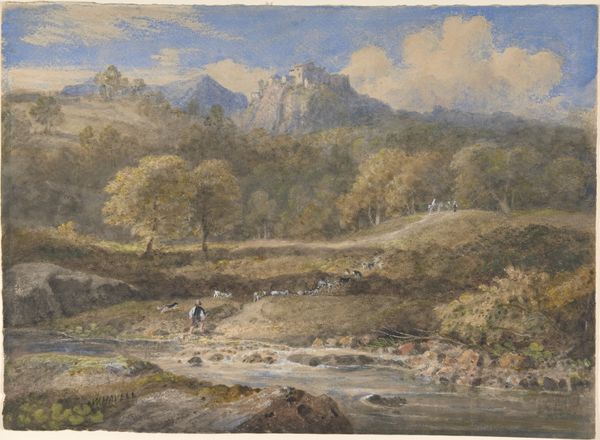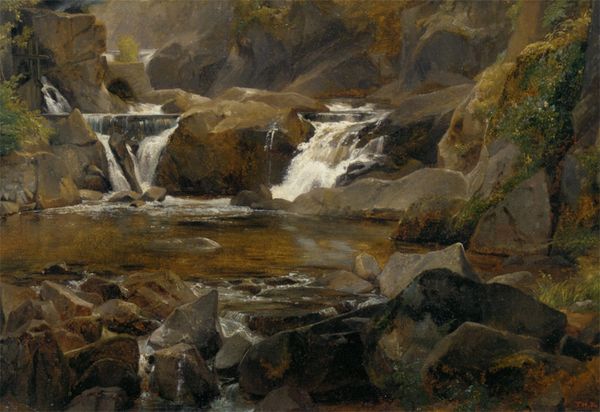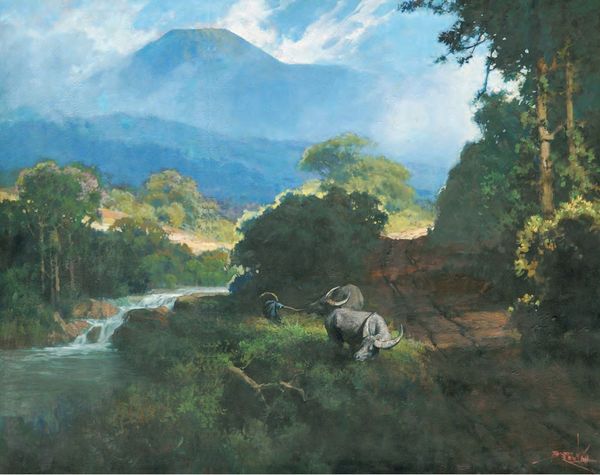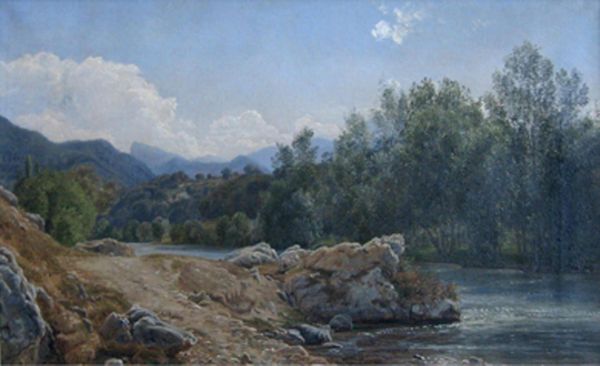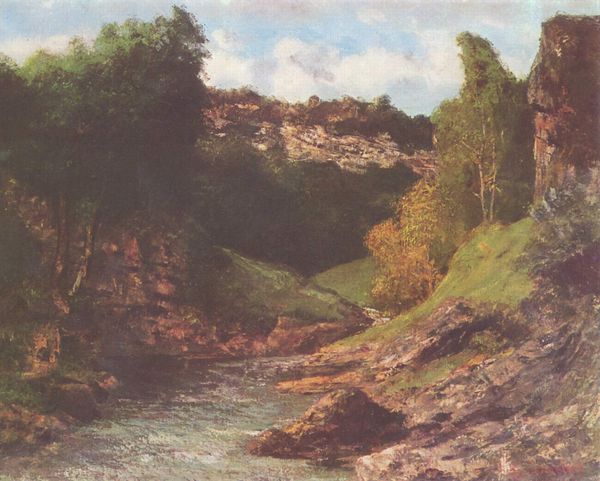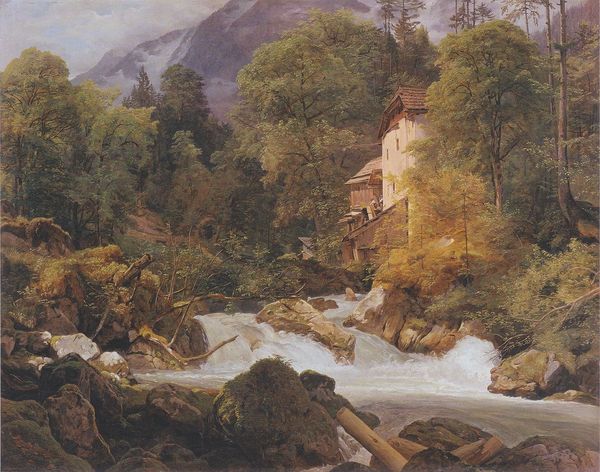
Dimensions: sheet: 50.48 × 75.57 cm (19 7/8 × 29 3/4 in.)
Copyright: National Gallery of Art: CC0 1.0
Curator: William Henry Millais’ watercolor, “On the East Lyn, North Devon,” painted around 1865, captures a beautiful and tranquil landscape. Editor: Immediately, I feel a sense of quiet. The subdued colors, the flowing water—it’s almost meditative. It feels like a scene designed to slow your breath. Curator: Millais was working during a period of great industrial expansion in England. Landscapes like this offered an escape, reinforcing a Romantic vision of unspoiled nature. Notice how the light seems to emanate from within the scene itself. Editor: Yes! And how cleverly he uses the tree on the right—framing the more distant, mysterious activity on the left bank with those almost spectral deer. He is constructing this stage. What a theater! The real world beyond dissolves behind his curtain. Curator: Indeed. These types of nature scenes were exhibited frequently during that time in galleries in order to encourage environmental protection policies for increasingly populated regions in Britain. Millais here presents this region with his use of watercolors, which contributes a more realistic texture compared to an oil painting. Editor: There's a fragility to watercolor that lends itself well to that sense of preservation, doesn't it? It feels as if he's urging us to treat this place with care. Maybe the very transience of the medium is part of the message: beauty is fleeting, appreciate it now. Curator: It reflects broader aesthetic preferences. But watercolor landscapes also allowed amateur painters from the gentry, especially women, to engage in and produce work for similar causes which served public and personal uses. Editor: Ah, interesting. A tool of personal expression tied into collective movements for conservation. It also makes me wonder: what kind of a man stops here to take note of something seemingly inconsequential to instead show you the magic right underneath his nose? It makes me happy to see him so affected by nature. Curator: The socio-political functions of a landscape such as this were many; for both its consumers and for Millais himself. It also represents part of the nineteenth century discourse regarding national heritage. Editor: Well, next time I’m feeling stressed, I know where to find a little bit of mental refuge. Curator: A powerful testament to the ongoing appeal of landscape and heritage, don't you agree?
Comments
No comments
Be the first to comment and join the conversation on the ultimate creative platform.
